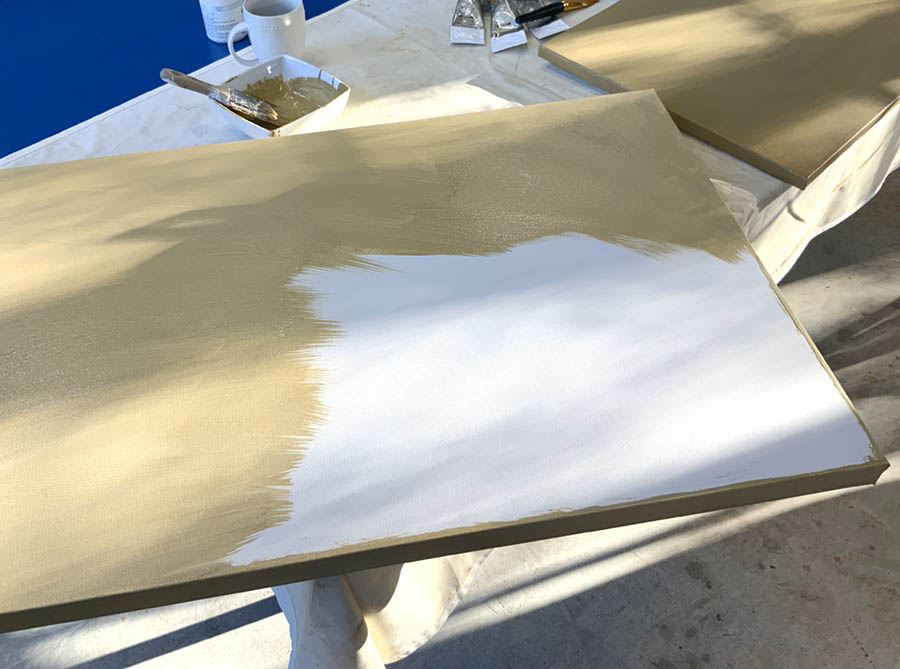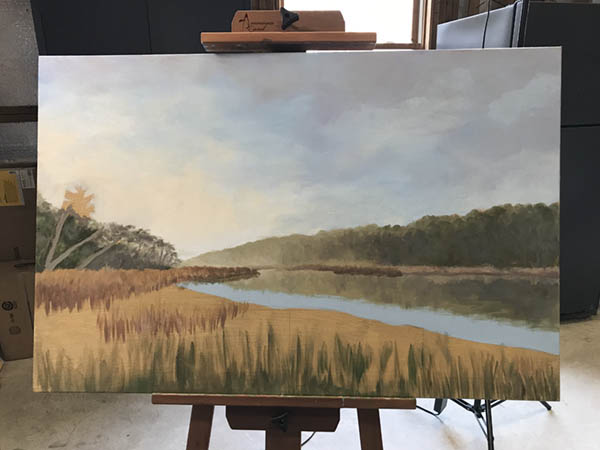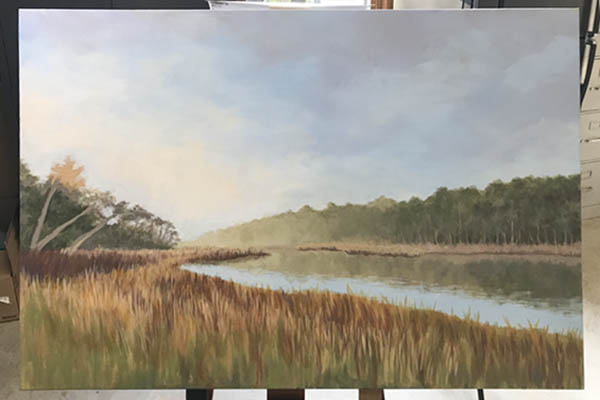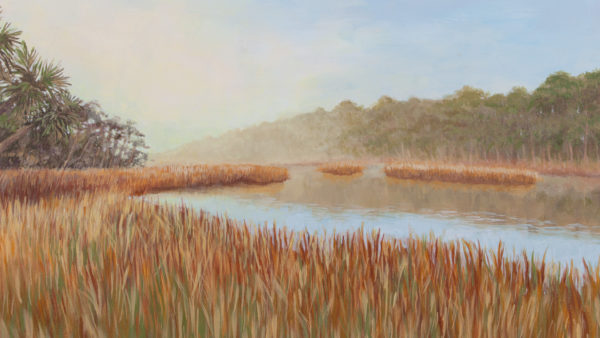Choose what to paint
Sometimes there is an image in my mind that really wants to come out, and sometimes I go through my collection of photographs to see what inspires me. I’m drawn to the wonder and mystery of our beautiful Lowcountry and for this painting, I had been thinking about a recent trip to the lagoon at Hunting Island during a misty winter morning. I usually settle on something I’ve seen or experienced in my wanderings with Karen, and this scene kept coming into my mind. I went through my photos from the trip and I did some additional research online for other details that I might want to incorporate.
Decide the size of the painting
I like to paint views on larger canvases, so I decided to create this work on a 36″ x 24″ canvas.
Prepare references
I print my photo reference in color and also black and white. When there are lots of details in the photo, I will add a grid to the black and white print and transfer the grid to the canvas. Then I can sketch in the basic composition and add other details. I try to keep the sketch loose and I will sometimes move elements around or simplify the composition for the painting.
Prepare the Surface
The plain white canvas is not only intimidating, it’s a hard background to work with. By adding a neutral tonal ground underpainting, I’m able to better sense the color and value of the paint I apply, and the warm ochre tone peeks through and adds depth. I often like to leave a few areas where the underpainting shows through so that the layers of the painting can be seen in the finished work.
Start Painting
This is where the fun really begins! At this point I want to cover most of the canvas with paint and establish the basic value structure and color scheme. I really get lost in the work at this stage. I meant to stop and take a photo after I painted the first color in the sky and water, which are the main background areas, but I got so caught up that I forgot to stop.
Build Up the Layers
At this point, most of the areas of the canvas have been painted and I’m beginning to layer in more color and details. In this painting there is lots and lots of elegant marsh grass to paint. I’ve left the palm trees largely unworked mainly because I’m not sure how to proceed with them and am waiting to build up the confidence to tackle them. I think they are going to be tricky. This is usually a challenging point in the painting. It doesn’t quite look like the reference, but it hasn’t quite figured out where it wants to go. I usually stop and give the work some time to breath and for the muse to whisper to me.
The Painting Speaks!
Eventually things start to gel and I find myself in the sweet spot. The painting is starting to come together, often in ways I didn’t plan. My old art professor taught me there was a dialectic with the art (at least that’s what I remember). I try to listen to the voice of the painting and see where its leading – but it’s like a conversation, not just a set of instructions to follow. This is a really joyful part of the process.
Finishing Touches
A glint of highlight here, a subtle glaze of color there. Details and finishing touches really make the painting sparkle. The trick is not to overdo it! It’s taken a long time to learn to stop a little before I think it’s done, so it doesn’t get overworked. I step back to look at the work from a distance to see if the whole works together, and once it does I try to stop fussing in tiny details. In digital art you can always hit the “undo” button, but it takes practiced judgement in painting to end at the right time.
Final Steps
The painting is done, but there are still some important details to take care of. I paint the edge of the canvas in a darker color that complements the painting and then add my signature. But that’s not the last step! I seal the painting with protective coat of gloss gel. Two coats of varnish help bring out the colors and add uv protection. Then the hanging hardware is attached and the painting is complete. These nuts and bolts activities may not seem very interesting, but I find them rewarding. It also helps me get closure on the project and helps prepare me for the next one.

I often use both color and bw prints for reference

Preparing the canvas with an underpainting

Establishing value structure and color scheme

Layering the water, marsh, and trees

The final painting!